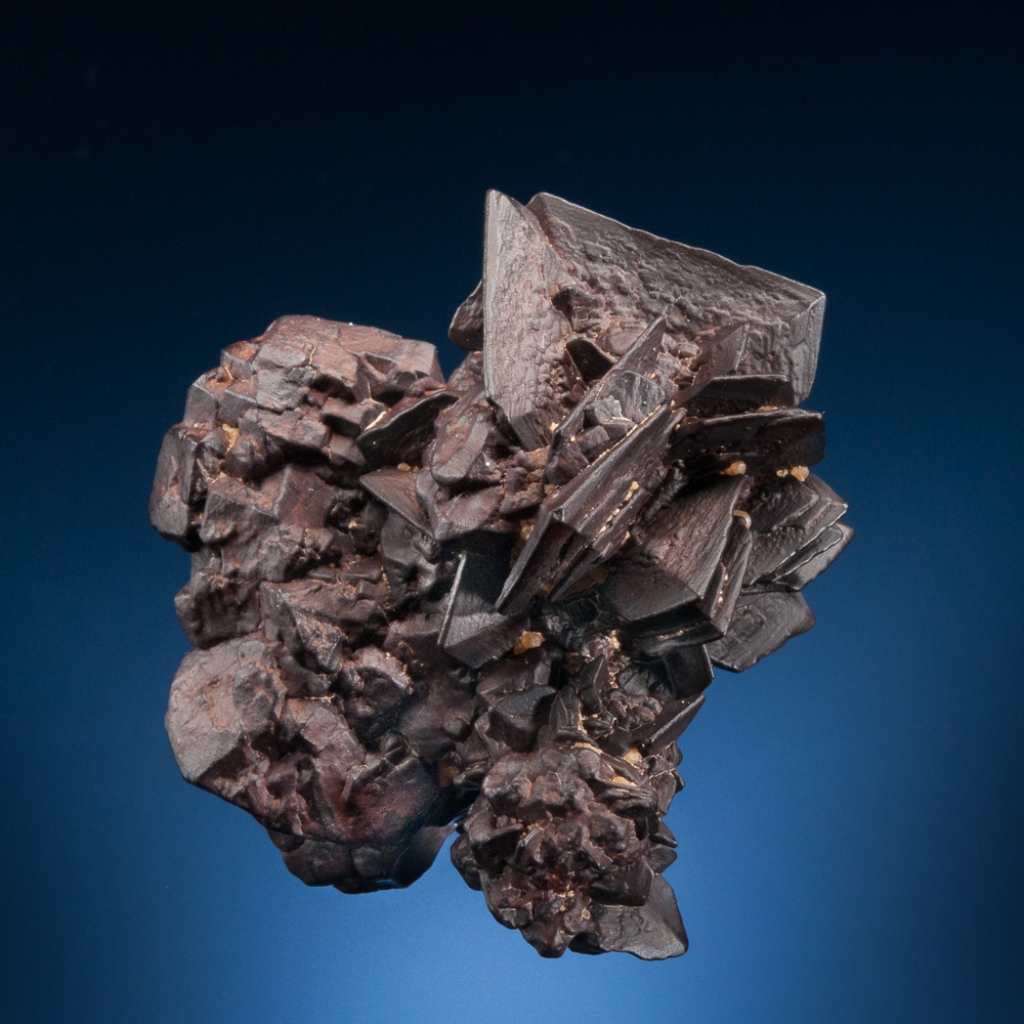Description
Detailed Description
This is a great goethite pseudomorph of both marcasite and pyrite. Beautiful sharp bladed marcasite crystal forms stand at the top of this piece in a cluster featuring two large, prominent crystals. Meanwhile, the side (or base, depeding on how you orient it) of this specimen is comprised of goethite psedomorphs after pyrite crystals – it’s unusual to see distinct crystals of marcasite and pyrite (in this case, pseudomorphs) together like this. In excellent condition, no damage to the display side, an incomplete marcasite on the backside. A super, distinctive specimen of these two pseudomorphs together.
Browse More White Desert Pseudomorphs
About These White Desert Pseudomorphs
This locality has been known for a number of years and pseudomorph specimens have come out once in a while. The pseudomorphs occur within the Cretaceous Khoman Chalk, from which the White Desert derives its name. Most crystals have typically been fairly indistinct, and to date sharp specimens have been uncommon. These specimens are remarkable for their relatively sharp marcasite crystal forms in aesthetic crystal clusters.
Over the years, these pseudomorphs have been variously labeled hematite, goethite and limonite (the latter no longer a valid mineral species name, but is a term still used in reference to unidentified iron hydroxides, so its use has not been incorrect). Recent work by Hannah Allen at Hamilton College has confirmed that the White Desert pseudomorphs are predominantly goethite. The small white grains lodged in among the crystal blades are barite, calcite and gypsum. (Allen, Hannah M., Pseudomorphed Mineral Aggregates of the Khoman Chalk, Western Desert, Egypt, Geological Society of America Abstracts with Programs. Vol. 46, No. 2, p.66 (2014)).
Although pseudomorphs after cubic and cuboctahedral pyrite crystals have also been found in the Khoman Chalk, the pseudomorphs after marcasite are more dramatic. These pseudomorphs are excellent specimens featuring beautiful marcasite crystal morphology, showing habits and forms exhibited by the crystallized marcasite specimens from the famous occurrences at Cap-Blanc-Nez, Pas-de-Calais, France.


